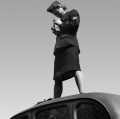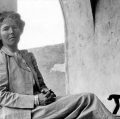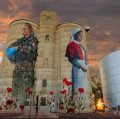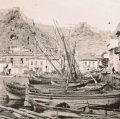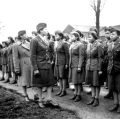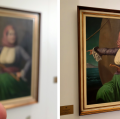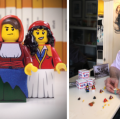There are not enough superlatives to describe this incredibly brave woman, Nancy Wake. She is considered one of our greatest heroines. Discover the incredible story of Nancy Wake or as the Gestapo called her “The White Mouse.” After you have stopped watching the videos, ask yourself how terrified must Nancy have been to do all that she did and get she did it all even after her husband was murdered by the Gestapo. She was FIERCE. How many Allied soldiers and Jewish people did she save? She probably never knew but they owed their lives to her bravery.
Here’s a list of the medals and honours she was given
- George Medal : Ensign N G A Wake, First Aid Nursing Yeomanry (Special Operations Executive)
- 1939-45 Star : Ensign N G A Wake, First Aid Nursing Yeomanry (Special Operations Executive)
- France and Germany Star : Ensign N G A Wake, First Aid Nursing Yeomanry (Special Operations Executive)
- French Officer of the Legion of Honour : Ensign N G A Wake, First Aid Nursing Yeomanry (Special Operations Executive)
- French Croix de Guerre : Ensign N G A Wake, First Aid Nursing Yeomanry (Special Operations Executive)
- United States Medal of Freedom : Ensign N G A Wake, First Aid Nursing Yeomanry (Special Operations Executive)
- French Medaille de la Resistance : Ensign N G A Wake, First Aid Nursing Yeomanry (Special Operations Executive)
- Companion of the Order of Australia (AC) – February 2004
Biography from the Australian War Memorial
https://www.awm.gov.au/collection/P332
Nancy Wake, a prominent figure in the French Resistance during the Second World War, was born in Wellington, New Zealand, on 30 August 1912. Her family moved to Sydney, where she grew up, when Nancy was just 20 months old. She ran away from home at the age of 16 and found work as a nurse, but a windfall enabled her to leave Australia for Europe in 1932. Wake settled in Paris, working for the Hearst group of newspapers as a journalist.
As the 1930s progressed, the rise of German Fascism formed the basis of many of Wake’s stories. In 1935 she visited Vienna and Berlin where the overt and violent anti-Semitism formed in her a desire to oppose Nazism. In November 1939 she married Henri Fiocca, a wealthy industrialist, in Marseilles. Six months later Germany invaded France. Wake and Fiocca joined the fledgling Resistance after France’s surrender in 1940.
Her growing involvement in the Resistance saw Wake and her husband assisting in the escape of Allied servicemen and Jewish refugees from France into neutral Spain. Fearful of being captured she too fled Marseilles and, after several thwarted attempts and a brief period in prison, Wake escaped across the Pyrenees. In June 1943 she reached England where she began working in the French Section of the Special Operations Executive (SOE).
After a period of training, Wake returned to France in April 1944 to help organise the Resistance before D-Day. Working in the Auvergne region, Wake was engaged in organising parachute drops of arms and equipment, and after D-Day, was involved in combat with bodies of German troops sent to destroy the Maquis.
Upon liberation, Wake learned that her husband, Henri, had been killed by the Gestapo in August 1943. In September 1944 she left the Resistance and went to SOE Headquarters in Paris, and then to London in mid-October. After the war she was decorated by Britain, France and the United States but, being unable to adapt to life in post-war Europe, she returned to Australia in January 1949 aged 37. Shortly afterwards she ran for the Liberal Party against Labor’s ‘Doc’ Evatt and, having been narrowly defeated, made a second attempt in 1951, again unsuccessfully.
Unsatisfied with life in Australia, Wake returned to England. In 1957 she married John Forward, an RAF officer. The couple returned to Australia in 1959. A third attempt to enter politics also failed and she and Forward ultimately retired to Port Macquarie where they lived until his death in 1997. In December 2001 she left Australia for England where she lived out her remaining years.
Wake’s medals are on display in the Second World War gallery at the Australian War Memorial.
There is also a magnificent book by Peter Fitzsimons called Nancy Wake. See below the videos for the link to the book!
NANCY WAKE BIOGRAPHY BY PETER FITZSIMONS


